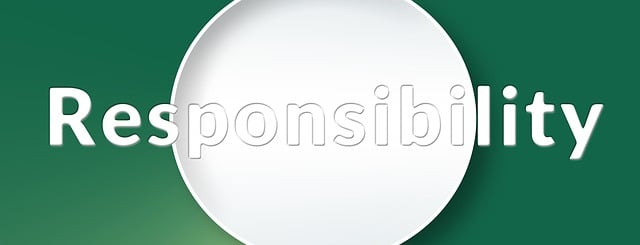Struggling businesses can explore debt restructuring loan options to avoid closure. This process involves renegotiating terms with lenders, extending repayment periods, and potentially attracting angel investors. By assessing cash flow, assets, and future prospects, companies can find tailored debt restructuring solutions for long-term financial stability, avoiding negative impacts on credit scores. Governments offer support initiatives with specific guidelines, assisting businesses in navigating complex negotiations for sustainable recovery.
Many businesses struggling with financial distress turn to debt restructuring as a potential lifeline. This comprehensive guide explores the various options available for companies facing closure, from understanding fundamental concepts like debt restructuring loans to navigating complex negotiations with creditors and leveraging government support initiatives. Discover strategic approaches to long-term financial recovery and learn how to chart a course toward sustainability beyond immediate challenges.
- Understanding Business Debt Restructuring
- Evaluating Closure Risks and Options
- Exploring Debt Restructuring Loans
- Renegotiating Terms with Creditors
- Government Support and Initiatives
- Long-term Financial Recovery Strategies
Understanding Business Debt Restructuring

Debt restructuring is a strategic process that allows businesses facing financial challenges to reorganise their debt obligations. It’s not about avoiding payments but rather creating a more manageable repayment plan. This approach offers various loan options tailored to help struggling firms breathe new life into their operations and avoid closure. The key lies in understanding the unique financial landscape of each business, ensuring the chosen debt restructuring plan aligns with its goals and capabilities.
When considering the best debt restructuring strategy, businesses should evaluate their cash flow, assets, and future prospects. Consulting with financial experts or specialists in this field is crucial to making informed decisions. For instance, a company might opt for extending repayment terms, renegotiating interest rates, or even exploring alternative financing options. It’s about choosing the right balance between what’s feasible and what turns the corner for long-term sustainability, especially compared to a do-it-yourself approach which could lead to missed opportunities or severe consequences for homeowners.
Evaluating Closure Risks and Options

Many businesses grappling with financial distress often find themselves at a crossroads, considering closure as an option. However, before making such a decision, it’s crucial to assess the closure risks and explore available alternatives, particularly debt restructuring loan options. This process involves meticulously evaluating the company’s financial health, cash flow projections, and the likelihood of recovery. By examining these factors, businesses can make informed choices about their future trajectory.
One popular approach is do-it-yourself debt restructuring, where companies attempt to renegotiate terms with creditors independently. While this method offers some control, it requires a comprehensive understanding of debt management versus restructuring. Unlike debt management, which primarily focuses on creating a repayment plan, debt restructuring involves altering the underlying terms and conditions of the debt. Understanding these nuances is essential when considering how to restructure debt effectively, ensuring long-term sustainability and potentially avoiding closure.
Exploring Debt Restructuring Loans

Many businesses facing closure or financial distress often consider a debt restructuring loan as one of their options. This approach involves renegotiating existing debt terms with lenders to create a more manageable repayment schedule, offering relief from immediate cash flow pressures. There are various debt restructuring loan options available, each catering to different business needs and sizes.
When exploring this route, it’s crucial to compare debt restructuring companies that specialize in facilitating such transactions. These professionals can help navigate the complexities of negotiation with lenders or even facilitate deals with angel investors for debt restructuring. While debt negotiation vs restructuring both aim to reduce debt burdens, they differ in approach: negotiation typically involves modifying existing terms, while restructuring entails creating a new repayment plan altogether.
Renegotiating Terms with Creditors

Many businesses facing closure can explore renegotiating terms with their creditors as a viable debt restructuring loan option. This process involves open communication and collaboration between the business and its lenders to find mutually beneficial solutions. One common approach is to adjust repayment schedules, interest rates, or other terms of the existing debt to make it more manageable for the business. Lenders may be willing to accommodate these requests if they see a genuine effort to repay the loan and a clear path to financial stability.
By renegotiating, businesses can aim for lower debt servicing costs, which can significantly improve cash flow. This strategy also provides an opportunity to explore secure debt restructuring options tailored to their specific needs. For instance, considering a debt consolidation home equity loan could be an option where the business uses its assets as collateral to secure a new loan with more favorable terms, potentially offering lower interest rates and extended repayment periods.
Government Support and Initiatives

Many governments worldwide have recognized the impact of business closures and rising debts, leading to dedicated support initiatives for struggling enterprises. These efforts often include various forms of financial assistance, such as grants, subsidies, and most notably, debt restructuring loan options. Aimed at providing a lifeline to distressed businesses, these programs offer temporary relief from debt obligations, allowing companies to restructure their finances and navigate through challenging periods. The focus here is on long-term sustainability rather than quick fixes.
One crucial aspect to remember is that government support often comes with specific guidelines and eligibility criteria. Businesses must actively engage in restructuring efforts, such as developing a comprehensive strategy to address their debts, including both short-term relief and long-term financial planning. Reputable debt consultants can play an invaluable role here, guiding companies through these initiatives and helping them troubleshoot student loan debt or other complex financial obligations.
Long-term Financial Recovery Strategies

Many businesses facing closure turn to debt restructuring as a crucial long-term financial recovery strategy. This process involves renegotiating terms with lenders to better align repayment schedules with current cash flows, often resulting in more manageable monthly payments and extended loan durations. By exploring these options, companies can navigate through challenging economic periods and preserve their operations for the future.
Effective debt restructuring strategies may include various approaches such as balloon payment debt restructuring, where a larger portion of the debt is repaid at once with smaller subsequent payments, or negotiating interest rate reductions. It’s important to note that while debt settlement, which involves paying a negotiated amount less than the total debt, seems appealing, it can have adverse effects on credit scores and future financing options, unlike debt restructuring that allows individuals and businesses to maintain a positive financial standing. Therefore, choosing the right debt reduction strategy is essential for achieving sustainable recovery.
Business closure looms over many companies burdened by overwhelming debt. However, through strategic debt restructuring, businesses can navigate this challenging phase. By evaluating closure risks, exploring debt restructuring loans, renegotiating terms with creditors, and taking advantage of government support, companies can pave the way for long-term financial recovery. With the right approach, it’s possible to transform debt into a manageable asset, ensuring a brighter future for the business and its stakeholders. Leverage these debt restructuring loan options to steer your company towards sustainability and success.
